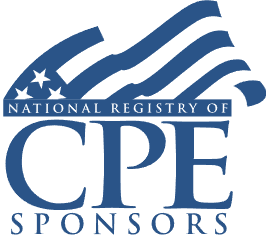Rule 506(b) Securities Offerings: Leveraging 506(b) Placements, Comparison to Rule 506(c) Offerings
Navigating Rules for Solicitation and Accreditation Process for Non-Accredited Investors

Course Details
- smart_display Format
On-Demand
- signal_cellular_alt Difficulty Level
Intermediate
- work Practice Area
Banking and Finance
- event Date
Wednesday, August 24, 2016
- schedule Time
1:00 PM E.T.
- timer Program Length
90 minutes
-
This 90-minute webinar is eligible in most states for 1.5 CLE credits.
-
BARBRI is a NASBA CPE sponsor and this 110-minute webinar is accredited for 2.0 CPE credits.
-
Live Online
On Demand
This CLE course will compare and contrast four types of private securities offerings under SEC Rule 506 utilizing different types of solicitation tools:
- Rule 506(b) without using a technology platform to communicate the offering to investors
- Rule 506(b) using a technology platform to communicate the offering to investors
- Rule 506 (c) using a technology platform
- Rule 506 (c) using social media or other forms of general solicitations
The webinar will discuss the benefits and drawbacks of 506(b) offerings, with particular focus on issues of solicitation and recent SEC guidance and no-action letters. The program will address the issues raised by including non-accredited investors in the offering, and authenticating the status of accredited investors.
Description
Rule 506(b) offerings differ in some respects from 506(c) offerings. While 506(b) offerings provides a bit more flexibility than 506(c) offerings, issuers face the drawback of not being able to find investors via the internet. However, recent SEC action letters have provided on-line portals some comfort with respect to internet solicitation.
The SEC’s 1997 Lamp Technology no action letter that allowed registered brokers ot us technology platforms to sell to “pre-qualified” investors, 2013 no-action letters to FundersClub and AngelList allowed an online platform that registered a user with a name and email address to show investments to that user. The SEC’s more recent no-action letter to Citizen VC addressed the issues of establishment of substantive relationships with unknown potential investors and what constitutes “general solicitation".
While a Rule 506(b) offering may include up to 35 non-accredited investors, issuers must consider carefully whether this strategy is practical given the onerous and costly disclosure information required for non-accredited investors as well as the burden on the issuer to show that the non-accredited investor met the “knowledge and experience” standard in 506(b)(2)(ii).
Listen as our panel of experienced securities practitioners analyzes Rule 506(b) securities offerings, discusses the benefits and drawbacks of 506(b) offerings, and compares and contrasts to 506(c) offerings. The panel will look at the issues of solicitation and recent SEC guidance and no-action letters as well as the inclusion of non-accredited investors and authenticating the status of accredited investors.
Outline
- Distinction between Rule 506(b) and Rule 506(c)
- Benefits and drawbacks of 506(b) offerings
- Use of general solicitation and advertising
- Marketing to unaccredited investors
- Determining whether an investor meets the accredited investor definition
- Defining "general solicitation" and use of 506(b) by technology platforms
- Inclusion of non-accredited investors in a 506(b) offering
- Using special purpose vehicles (SPVs) to syndicate offerings
Benefits
The panel will review these and other key issues:
- When may a 506(b) offering be more suited than a 506(c) offering?
- What guidance does the SEC’s 2015 Compliance and Disclosure Interpretations (C&DIs) provide on establishing “preexisting” and “substantive” relationships?
- How does the accreditation process differ between 506(b) and 506(c) offerings?
NASBA Details
Learning Objectives
After completing this course, you will be able to:
- Recognize the accreditation process differences between Rule 506(b) and Rule 506(c)
- Determine whether an investor meets the accredited investor decision
- Identify "general solicitation" and use of 506(b) by technology platforms
- Ascertain when to use special purpose vehicles to syndicate offerings
- Recognize circumstances where a 506(b) offering is more suitable than a 506(c) offering
- Field of Study:
- Level of Knowledge:
- Advance Preparation: None
- Teaching Method: Seminar/Lecture
- Delivery Method: Group-Internet (via computer)
- Attendance Monitoring Method: Attendance is monitored electronically via a participant's PIN and through a series of attendance verification prompts displayed throughout the program
- Prerequisite: Basic knowledge of securities offerings and placements subject to SEC 506 rules.

Strafford Publications, Inc. is registered with the National Association of State Boards of Accountancy (NASBA) as a sponsor of continuing professional education on the National Registry of CPE Sponsors. State boards of Accountancy have final authority on the acceptance of individual courses for CPE Credits. Complaints regarding registered sponsons may be submitted to NASBA through its website: www.nasbaregistry.org.
Unlimited access to premium CLE courses:
- Annual access
- Available live and on-demand
- Best for attorneys and legal professionals
Unlimited access to premium CPE courses.:
- Annual access
- Available live and on-demand
- Best for CPAs and tax professionals
Unlimited access to premium CLE, CPE, Professional Skills and Practice-Ready courses.:
- Annual access
- Available live and on-demand
- Best for legal, accounting, and tax professionals
Unlimited access to Professional Skills and Practice-Ready courses:
- Annual access
- Available on-demand
- Best for new attorneys
Related Courses
Recommended Resources
Making Continuing Education Work for You, Anytime, Anywhere
- Learning & Development
- Career Advancement
